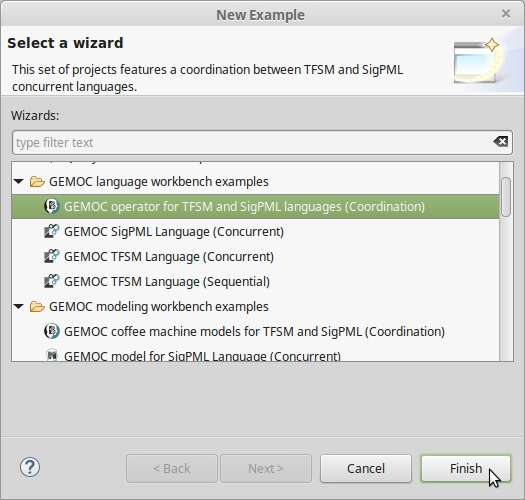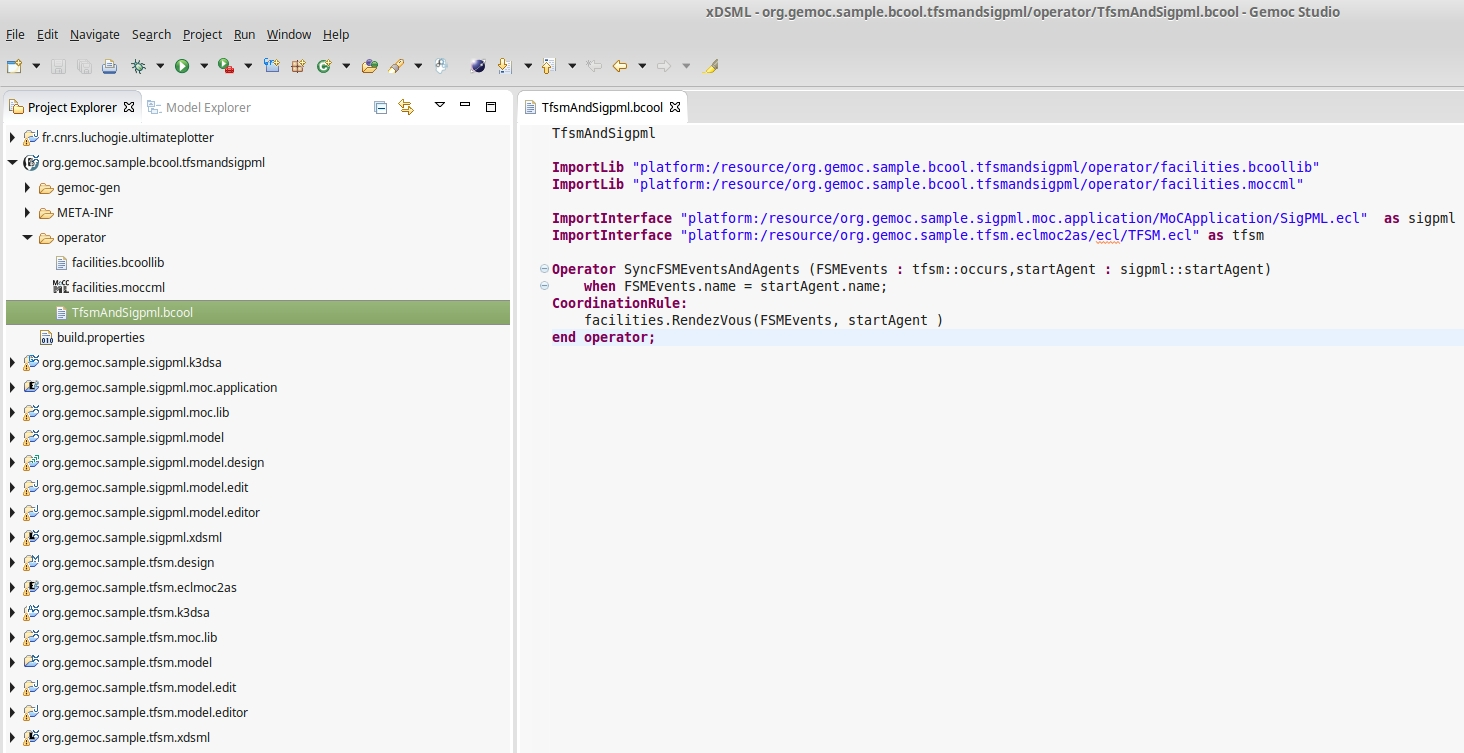Depending on the technology used to define the behavior of your languages, they may be run simultaneously in a larger simulation using several models.
GEMOC offers some mechanisms to define how the simulation must collaborate and synchronize their execution.
BCOoL is a dedicated language to explicitly specify coordination patterns, i.e., to specify, at the language level, how some models conforming to different DSMLs can be coordinated. This enables the integrator to capture the knowledge of integration of systems. In BCOoL, the specification relies on Operators. Once an operator is defined between different DSMLs, it can be used to generate a coordination model between any models conforming the DSMLs used in the operator.
BCOoL is developed on top of the eclipse platform as a set of plugins. More precisely, it is integrated to the GEMOC studio.
BCOoL is based on the EMF and its abstract syntax has been developed using Ecore (i.e., the meta-language associated with EMF). The textual concrete syntax has been developed using Xtext, providing advanced editing facilities.
BCOoL adds coordination facilities to the GEMOC studio. In the language workbench, an integrator can develop BCOoL operators to specify coordination patterns between languages, and then a system designer can use these operators in the modeling workbench to coordinate (possibly heterogeneous) models.
The GEMOC studio includes example operators that can be automatically deployed by using the wizard. Such examples can be a good starting point with BCOoL.
The GEMOC studio contains several examples than can be automatically deployed by using the wizard. The deployment of a BCOoL specification should be done in the language workbench. To do so, it is necessary to go to New > Example > GEMOC language workbench examples as is shown in the Figure 2.
The language workbench must also contain the languages that are used by the BCOoL project. For instance, for the operator between the SigPML and TFSM languages, the SigPML and TFSM projects must be deployed in the language workbench. If the corresponding languages are not deployed, we get no resolved problems (see Figure 3). These languages can be deployed by doing New > Example > GEMOC language workbench examples.
Once deployed, it is necessary to do Project > Clean in order to make the studio to find all the dependencies. The resulting language workbench should look as in the Figure 4. In this example, the directory operator contains the BCOoL specification. The project has already the BCOoL Nature, which makes compile automatically the BCOoL specification into a QVTo transformation and stores it in the /gemoc-gen directory.
Once a BCOoL specification is deployed in the language workbench, it can be used in the modeling workbench to automate the coordination of models. We show this in the section Coordinating Model Execution.
Here we explain how to create a BCOoL project from scratch in the language workbench. To do so, it is necessary to first create an empty project by doing File > New > Other > General Project. Then, it is necessary to convert the project to a plugin by doing New > Configure > Convert to plugin. Finally, it is necessary to add the XText and BCOoL Nature. By doing so, we ensure the correct behavior of the XText mechanisms of scoping and the automatically compilation of the BCOoL specification.





